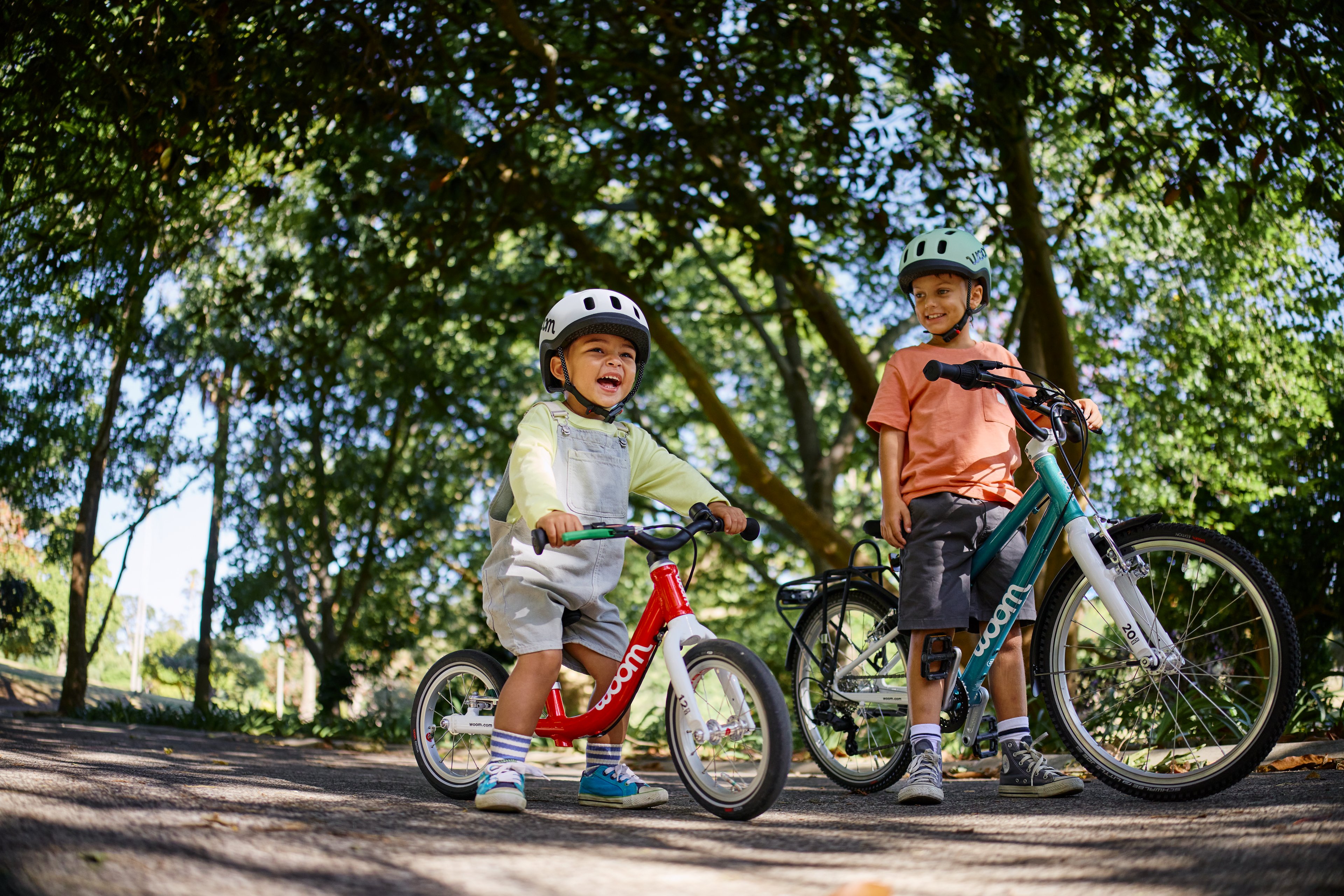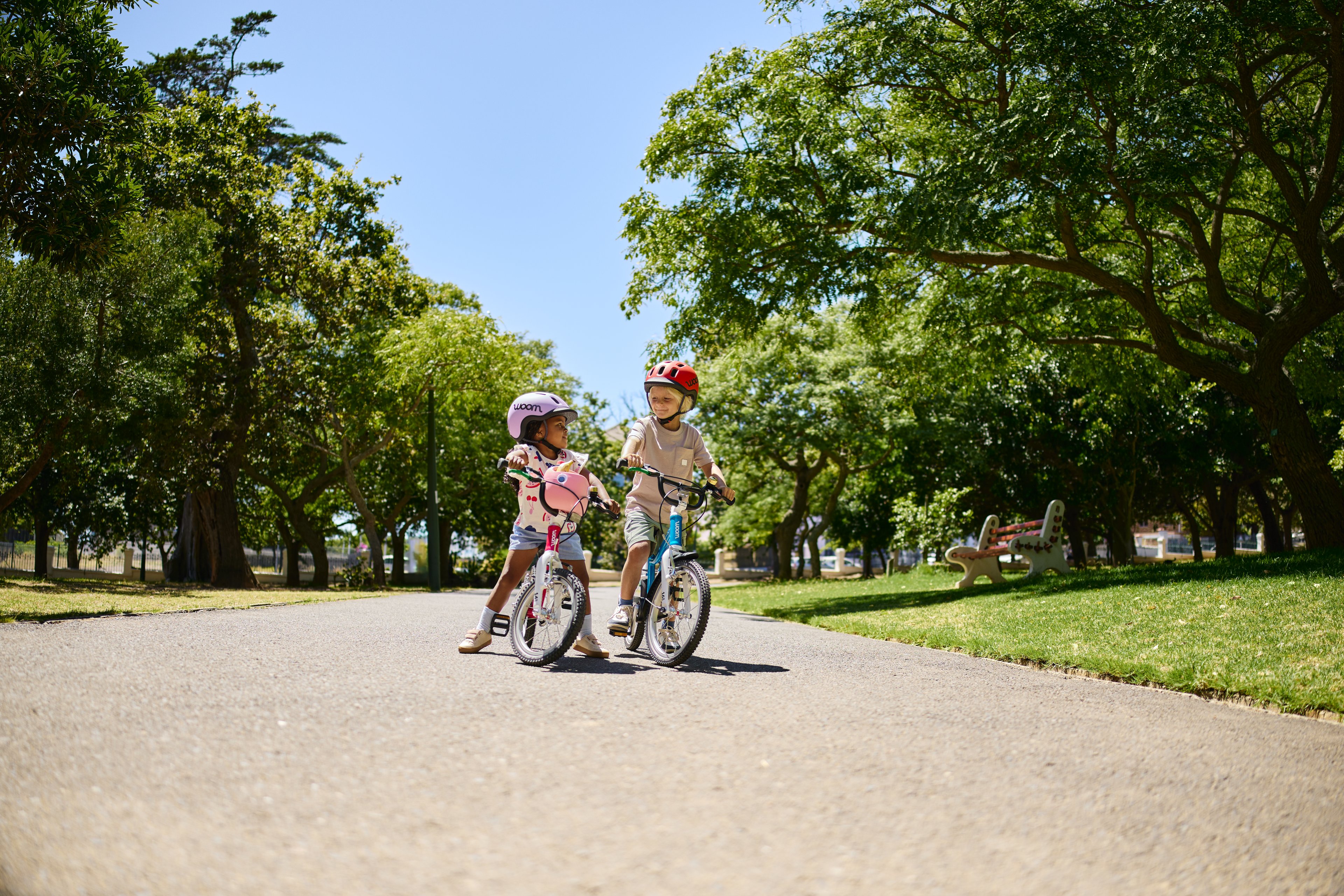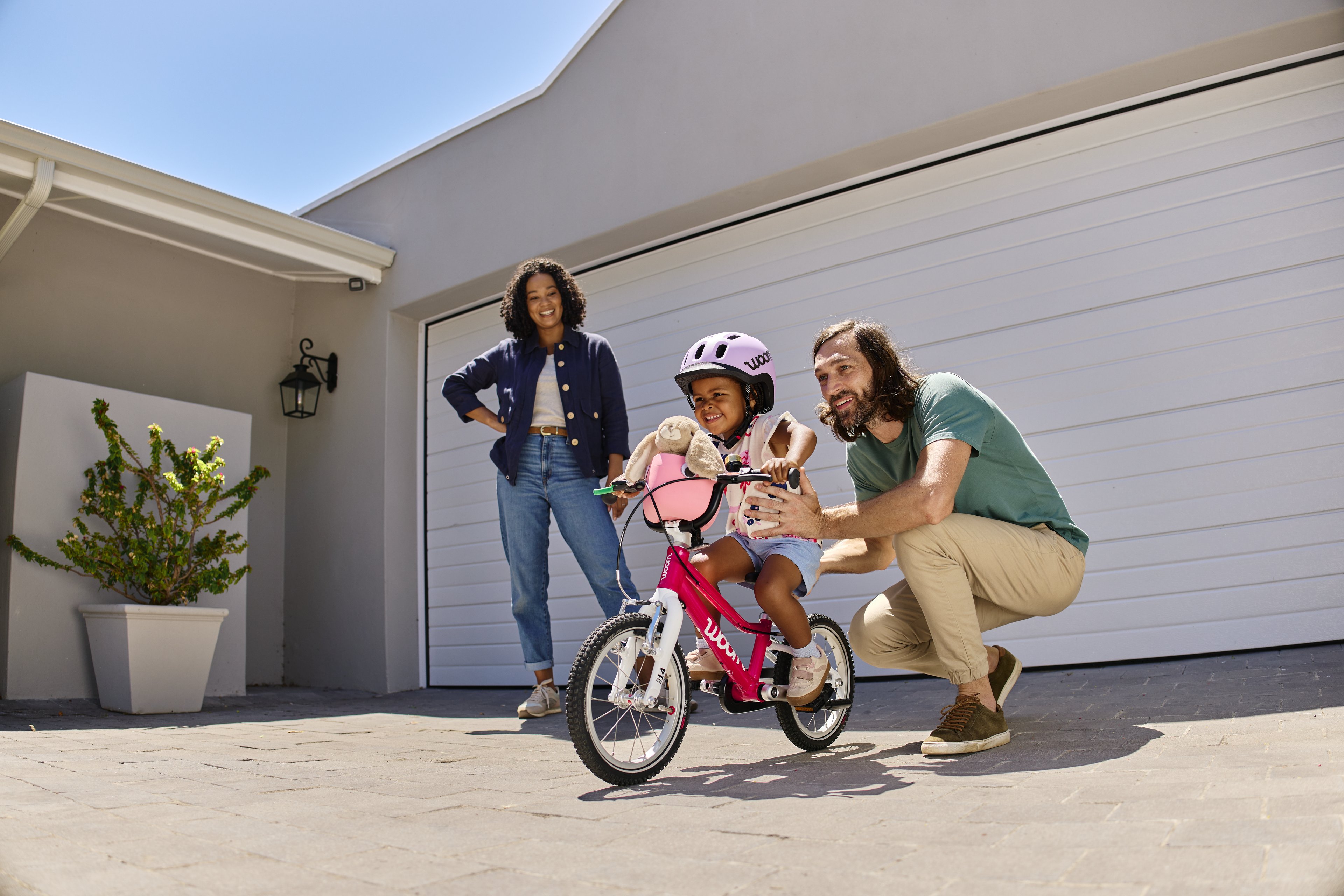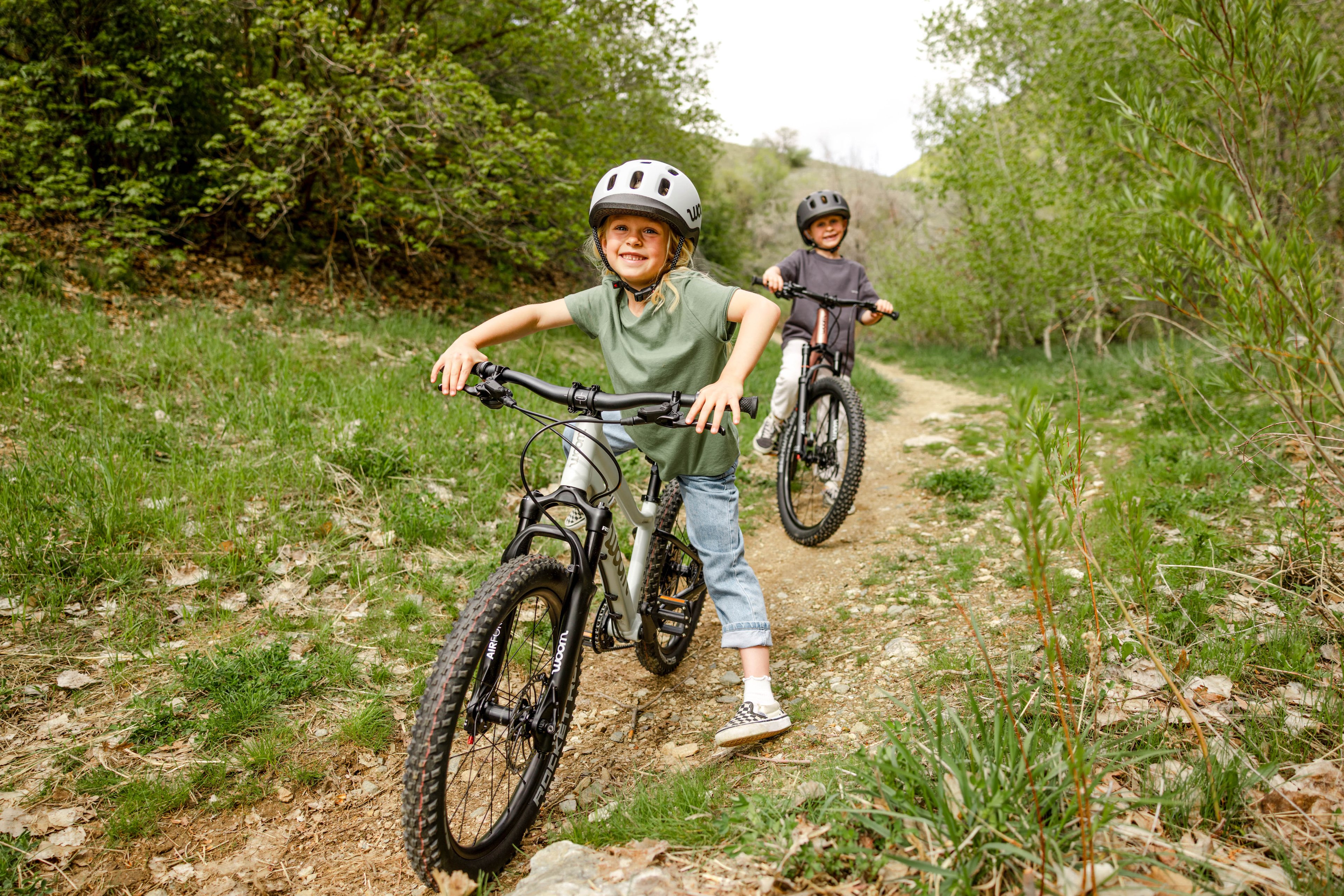What Size is Right?
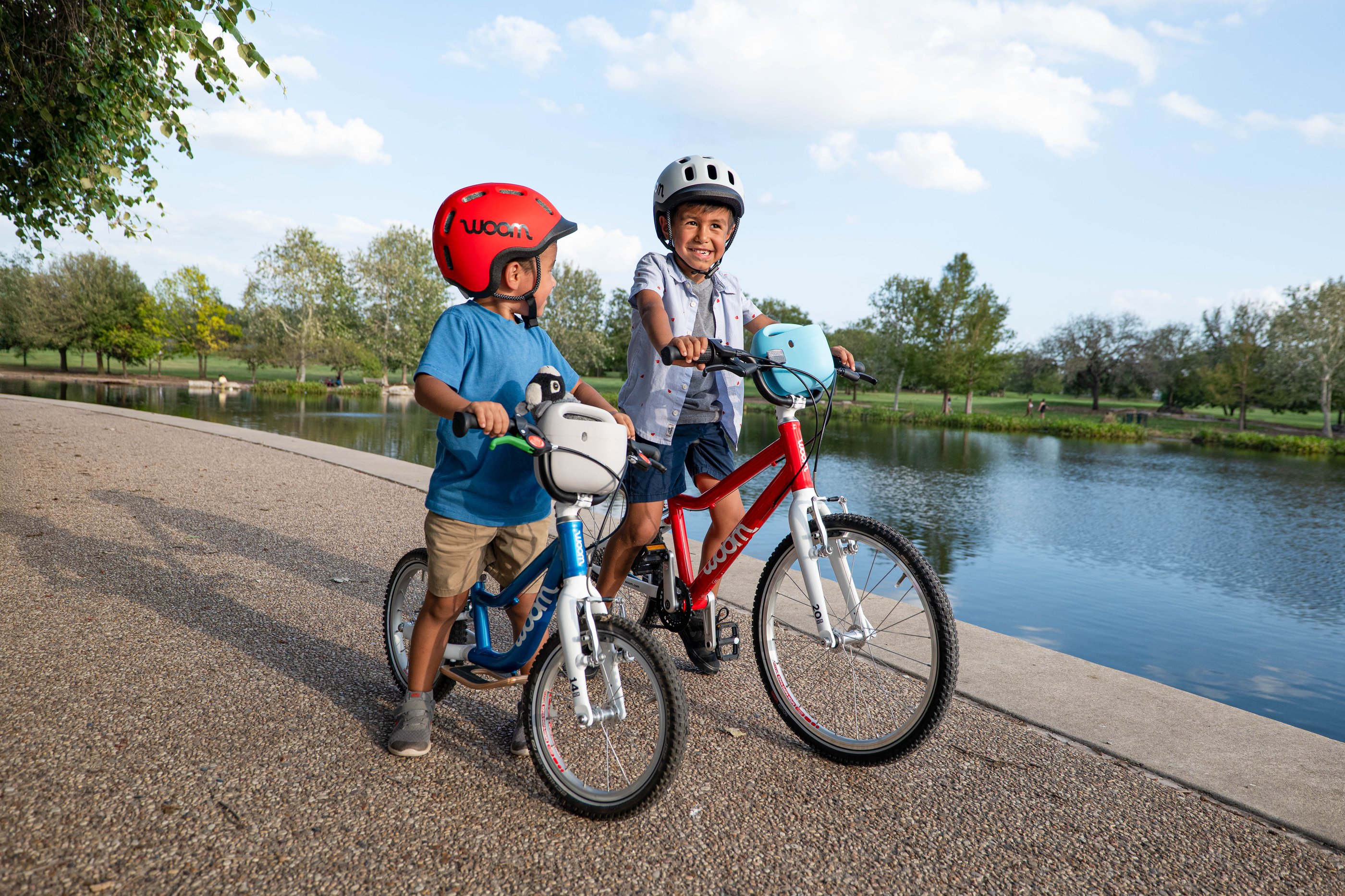
If Goldilocks were to try out three bikes instead of three bowls of porridge—there would still be one that’s just right. For every kiddo, there’s a bike designed to be the perfect fit, one that’s not too small or too big. We may be talking small increments here (mere inches), but even an inch or two can be the differentiator between fun and frustration. That’s why it’s so important to buy a bike that fits your child properly – it can easily be the tipping point in making sure your child truly enjoys the ride. Goldilocks may not have had any guidance on which porridge to try first, but you’re in luck, we have a way to help you find which bike will be the perfect fit!
The woom Bike Finder Quiz allows us to give you our best recommendation by simply inputting your child’s size, skill level, and the terrain they’re most likely to ride.
The Bike Finder Quiz is more than meets the eye. While it may seem like we’re just using a few simple calculations, we actually have an advanced sizing system derived from data on children’s anatomy. This is the data we use when designing woom bikes, so it makes sense that we use it to help you find the perfect fit! Throughout all the data we could potentially gather, your child’s height and skill level are the most important pieces of info.
If you have carefully browsed our bike models, you may have noticed that there exists an overlap between each bike’s respective size range. This is intentional and ensures there is always a comfortable bike no matter the child’s height. For example, the woom GO 2 is intended for children 37-43” in height, but the woom GO 3 is for children 41-47”. Note that when taking the Bike Finder Quiz, we default to recommending the larger of the two options – so a child who is 42” would get recommended the woom GO 3. Skip ahead to the “Size Overlap” section below for more info on this scenario.
Lastly, we can’t stress how important it is to get a fresh, accurate measurement. By “guesstimating” or going off of a previous measurement you may not be getting the best bike model recommendation – after all, kids grow fast. Time to break out the measuring tape!
After inputting height, you’ll get follow-up questions custom to the particular age range, based on our catalog of bike models (exception: if your child is under 37” tall they will get recommended the woom GO 1 straight away).
If you’re on the fence between two different models, keep reading for more context. In the sections below we cover how to measure your child’s inseam, the pros and cons of going big or small when your child is in a sizing overlap, and break down the differences between our different product collections.
After using the Bike Finder Quiz, you may want to consult our inseam chart to confirm the recommended size. It never hurts to be too sure! As we mentioned, this is particularly helpful if your child falls between two sizes and you’re torn about which model would fit them best.
What is inseam length? Well, it’s the distance from the inner thigh to the floor. It's important to know this because these measurements align with how your child’s legs will fit from saddle to ground.
Here's how to measure your child's inseam as accurately as possible:
- Have your child stand up straight against a wall wearing the shoes and pants likely to be worn while riding a bike
- Take a hardcover book and place the spine of the book (facing upward) at your child’s crotch using the same slight pressure that would be applied by a bike saddle while riding
- Mark the edge of the book's spine on the wall in pencil
- Now, measure the distance from the floor to the marking as vertically as possible with a measuring stick or tape measure. This is your child’s inseam measurement in inches.
- Compare the measurement with the minimum inseam lengths in the table below:
Model | Rider's Inseam Range | Rider's Height Range |
| woom GO 1 | 10.0" - 14.4" | 31" - 40" |
| woom GO 1 PLUS | 14.8″ - 18.5″ | 37″ - 43″ |
| woom GO 2 | 16.0″ - 19.1″ | 37″ - 43″ |
| woom GO 3 | 19.1″ - 25.2″ | 41″ - 47″ |
| woom GO 3 AUTOMAGIC | 19.1″ - 25.2″ | 41″ - 47″ |
| woom GO 4 | 22.1″ - 27.9″ | 45″ - 51″ |
| woom EXPLORE 4 | 22.1″ - 27.9″ | 45″ - 51 |
| woom EXPLORE 5 | 26.4″ - 32.3″ | 49″ - 57″ |
| woom EXPLORE 6 | 29.5″ - 37.4″ | 55″ - 65″ |
| woom OFF 4 | 22.8″ - 28.7″ | 46″ - 51″ |
| woom OFF 5 | 27.8″ - 33.7″ | 50″ - 57″ |
| woom OFF 6 | 30.3″ - 37.8″ | 55″ - 65″ |
| woom OFF AIR 4 | 22.8″ - 28.7″ | 46″ - 51″ |
| woom OFF AIR 5 | 28.3″ - 34.3″ | 50″ - 57″ |
| woom OFF AIR 6 | 30.7″ - 38.2″ | 55″ - 65″ |
| woom NOW 4 | 22.8″ - 28.7″ | 46″ - 51″ |
| woom NOW 5 | 27.8″ - 33.7″ | 50″ - 57″ |
| woom NOW 6 | 30.3″ - 37.8″ | 55″ - 65″ |
| woom UP 5 | 28.0″ - 33.5″ | 50″ - 57″ |
| woom UP 6 | 30.9″ - 37.4″ | 55″ - 65″ |
If your child might fit two sizes, do you go bigger or smaller? The most common question our customer experience team receives is about the right size for a child’s first pedal bike: A woom GO 2 or a woom GO 3?
The answer? It depends on the unique scenario; no two kids are exactly alike. That said, when thinking of building the child’s confidence, we’ve often found it’s better to shoot for the stars with the smaller bike than to opt for the one that’s just a little too big. Even if a child can confidently whiz around the neighborhood on a balance bike, the transition to pedals involves learning how to pedal while simultaneously applying the skills they already know: Balancing, steering, braking, and making turns. At first, this will be a challenge that your kiddo will need to master in order to gain the ever-important sense of security
Pros & Cons
A relatively larger bike will be harder to stop and start, and it also may require its Rider to stand on their tiptoes. Children may feel less confident and comfortable if that’s the case. This could discourage kiddos from learning to ride or enjoying the bike. A too-big bike is less ideal for off-road riding as well.
If a Rider is truly right on the cusp of needing a larger size, there are a few upsides: The child will have a better position for efficient pedaling and will be able to use the bike longer before moving up to the next size.
Meanwhile, a relatively smaller bike will be easier to maneuver and less intimidating, especially for beginners. The Rider will learn to pedal not only sooner, but with greater confidence. The disadvantage here, once again, is that the child won’t be able to use the smaller bike for as long. That said, this is where buying a premium product matters: woom bikes are incredibly durable and typically fetch 80% of their initial cost when resold. Knowing this from the get-go means less concern over “wasting money” and more of a focus on finding the perfect bike for right now.
We all know just how fast kids grow. Many members of the woom community wonder how much use their child will get from a woom before it’s time to buy a new bike and size up.
We’ve found that children will fall in between the ideal height range for a bike for about two years if the bike is purchased when the child is at the lower end of the height range.
While sizing up every two years may seem frequent, a woom bike is truly an investment for the long term, even when purchased for the short term. woom bikes are made to stand the test of time, both design and wear-wise. Not only is it common to see our customers hand down their bikes to the next Rider in the family, we also see woomsters reselling their bikes. A slightly used woom bike can sell for up to 80 percent of its purchase price.
If your child is already confidently riding a woom GO 2, woom GO 3, or woom GO 4, you may be wondering whether you should skip a size when you buy your next bike.
We generally advise against skipping a size. Even if your child’s confidence is sky high, you should keep in mind that skipping a size not only means riding on a bigger frame, but also safely managing more weight. Handling the relatively smaller bike will always be easier for a child.
Once your child starts approaching 4 feet tall, even more woom bike models are available. To account for these options, a few additional questions will appear to determine where your child will ride most, whether just around the neighborhood, in an urban setting, or off-road.
So, should you go for the quintessential woom GO, the versatile woom EXPLORE, the urban woom NOW, the rigid woom OFF, the hardtail OFF AIR, or the woom UP e-mountain bike? It really all depends on where your child will likely ride the most; each bike has its niche. If you’re stuck on the decision-making trail between a rock and a hard place, check out our handy blog.
Getting the right size bike definitely sets your Rider up for success. But you’ll also need to get them the right size helmet. To determine the best size helmet for your child, you’ll need to measure the circumference of their head, ideally using a measuring tape (however a string coupled with a yardstick works in a pinch). Start in the middle of the forehead, and wrap the tape around the widest part of your child's head back to the starting point. Please note, if your child is between two sizes, we recommend going with the larger option!
Size | Circumference (in) |
| XS | 18.2-19.6 |
| S | 19.7-20.8 |
| M | 20.9-22 |
